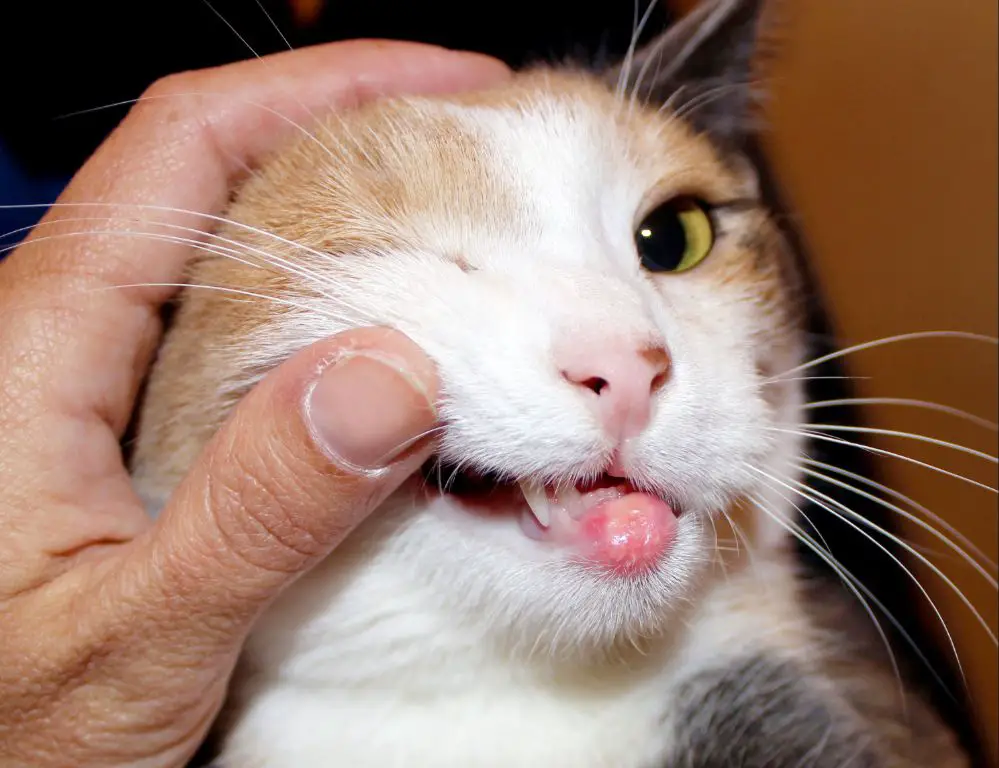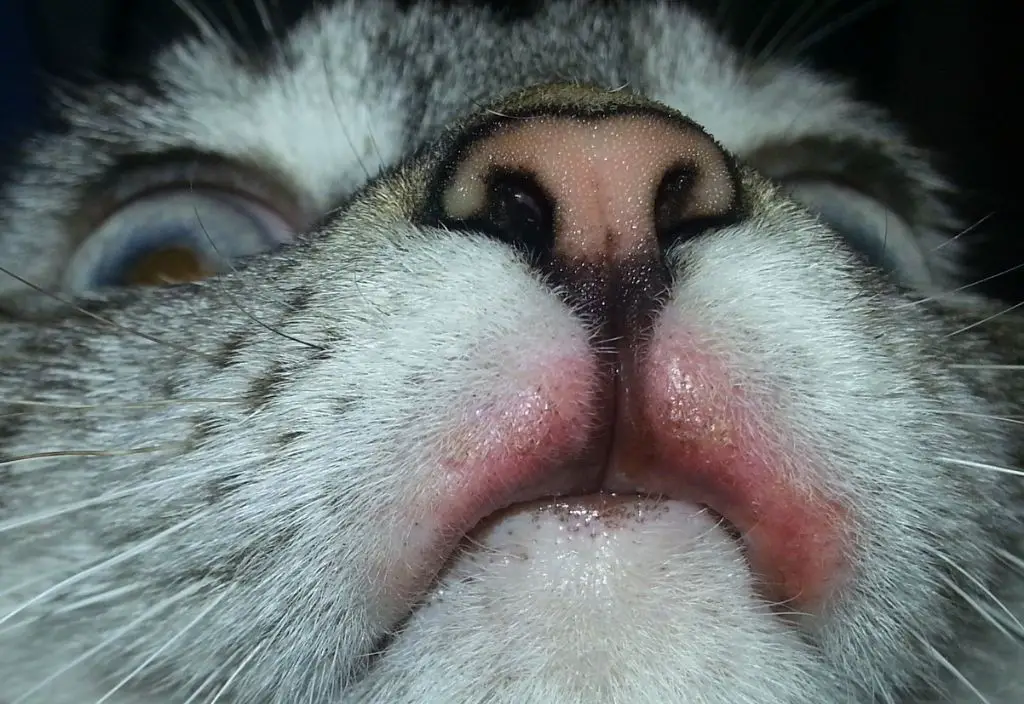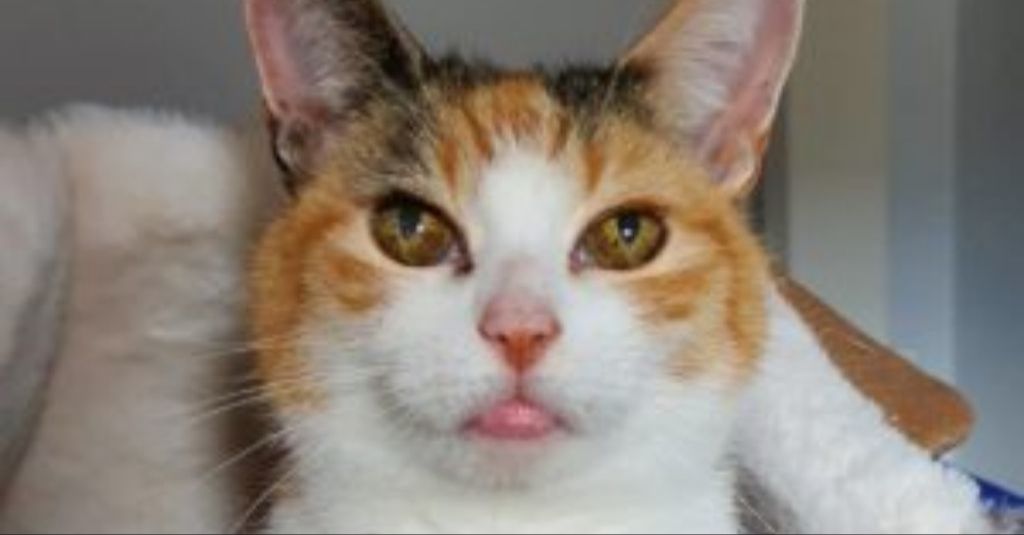What are rodent ulcers in cats?
Rodent ulcers, also known as eosinophilic granulomas or indolent ulcers, are a common skin condition in cats characterized by ulcerations typically found on the upper lips near the nose. The lesions are often raised, oval-shaped, and have a reddened inflamed border (VCahospitals, 2022).
Despite the name, rodent ulcers have no connection to rodents. The term comes from the ulcer’s resemblance to gnaw marks left by rodents. However, the ulcers are an immune-mediated disease caused by an overreaction of white blood cells called eosinophils (The Spruce Pets, 2023).
The most common symptoms of rodent ulcers in cats include (Bajwa, 2019):
- Crusty, oozing sores on the lips, nose, or face
- Hair loss around the ulcer
- Swelling and inflammation
- Bleeding from the lesions
- Discomfort eating or facial rubbing
While rodent ulcers in cats may look concerning, they are generally not considered serious or life-threatening. However, proper treatment and monitoring are important to avoid complications and discomfort for the cat.
Are rodent ulcers contagious to other cats?
Rodent ulcers are not contagious to other cats. They are not spread through direct contact between cats or through exposure to saliva, blood, or excretions from an infected cat (1). Rodent ulcers are actually a manifestation of a condition called eosinophilic granuloma complex, which is an immune-mediated disease. The underlying cause is not entirely known, but it is not infectious. Cats develop rodent ulcers when their immune system overreacts and causes inflammation and ulceration in the mouth. While the exact trigger for this immune overreaction is unknown, it does not involve transmission of any virus, bacteria or other pathogen between cats. So cats can develop rodent ulcers spontaneously without “catching” it from another cat. Direct contact, grooming, sharing food bowls, or any other interactions will not spread rodent ulcers from a cat that has them to a cat that does not.

(1) https://www.thesprucepets.com/rodent-ulcers-in-cats-5093328
Are rodent ulcers contagious to humans?
Rodent ulcers are not contagious to humans, according to both The Spruce Pets and the Rodent Ulcer site. These ulcers cannot spread through simple contact with an affected cat. There is no evidence that rodent ulcers can be passed from cats to their human owners.

While rodent ulcers themselves pose no risk, The Spruce Pets notes some precautions cat owners should take. For example, the ulcerated area may weep fluid that could potentially carry other pathogens. Owners should avoid contact with any ulcer drainage and wash hands after touching an affected cat. It’s also wise to keep the cat indoors until ulcers are healed to prevent any dirt or debris from getting into the open sores.
Overall, while rodent ulcers are not pleasant for the cat, they do not represent a contagion risk for humans. Basic hygiene like handwashing is recommended when caring for a cat with ulcers. However, the ulcers themselves cannot spread to humans through casual contact with an affected cat.
What causes rodent ulcers in cats?
The exact cause of rodent ulcers in cats is unknown, but certain factors are believed to increase the risk. Some research suggests that rodent ulcers may result from an abnormal immune response or allergy in genetically predisposed cats[1].
Rodent ulcers are more common in middle-aged and older cats. Purebred cats such as Persians and Himalayans may have a genetic predisposition. Underlying health conditions like dental disease, viral infections, trauma, stress, and nutritional deficiencies may also increase susceptibility[2].
The most identifiable risk factors for rodent ulcers in cats include:
- Age – middle-aged and older cats are at higher risk
- Breed – Persians, Himalayans, and other brachycephalic breeds prone
- Dental disease
- Viral infections like feline herpesvirus, calicivirus, or immunodeficiency virus
- Trauma or injury to the face/mouth
- Stress
- Poor nutrition
While the underlying cause may not be clear in every case, identifying and managing risk factors can help prevent rodent ulcers.
[1] https://www.ncbi.nlm.nih.gov/pmc/articles/PMC6697023/
[2] https://vcahospitals.com/know-your-pet/feline-eosinophilic-granuloma-complex-in-cats
Diagnosing rodent ulcers in cats
Rodent ulcers have a very distinct presentation, so diagnosing them is typically straightforward for a veterinarian. The veterinarian will begin with a physical exam, looking for lesions on the lips, gums, and nose that match the description of rodent ulcers – namely, crater-like ulcers with raised, thickened edges.
To confirm the diagnosis, the vet may perform additional diagnostic tests:
- Cytology or biopsy – Collecting a sample of cells from the ulcer and examining it under a microscope. This allows the vet to look for an abundance of eosinophils, a type of white blood cell. An overabundance of eosinophils is the hallmark of rodent ulcers.
- Fungal culture – Rodent ulcers can sometimes be mistaken for fungal infections. A culture can help rule out a fungal cause.
- Biopsy – Taking a small sample of the ulcerated tissue and examining it under a microscope. This allows the vet to evaluate the types of cells present and confirm the diagnosis.
It’s important to differentiate rodent ulcers from other similar skin conditions in cats, such as viral plaques, autoimmune skin diseases, and squamous cell carcinoma. Viral plaques tend to occur on the nose/lips but don’t ulcerate. Autoimmune diseases cause more generalized skin lesions. Squamous cell carcinoma causes ulceration but usually appears as a raised, irregular mass rather than a clean crater.
With the characteristic presentation of rodent ulcers, a thorough physical exam is often sufficient for diagnosis. But cytology, culture, or biopsy can provide confirmation if the vet needs it.
Treating Rodent Ulcers in Cats
The treatment for rodent ulcers depends on several factors including the severity of the ulcer, the underlying cause, and the cat’s response to therapy. Some common treatment options include:
Medications:
Corticosteroids like prednisone and dexamethasone are commonly prescribed to reduce inflammation and itching. They can be given orally, topically, or by injection (https://vcahospitals.com/know-your-pet/feline-eosinophilic-granuloma-complex-in-cats).
Antibiotics may be used to treat or prevent secondary infections.
Immunomodulatory drugs like cyclosporine may help regulate the immune response.
Surgery:
Surgical removal of the ulcerated tissue may be done, especially if the lesion doesn’t respond to medications. This removes all infected tissue and allows healthy tissue to regrow.
Cryosurgery can also be used to freeze and destroy diseased tissue.
Other therapies like laser treatments, radiotherapy and immunotherapy may also be considered for severe or refractory cases. The treatment plan will depend on your cat’s specific condition and response. Be sure to follow your vet’s recommendations.
Preventing rodent ulcers in cats
There are several ways cat owners can help prevent their cats from developing rodent ulcers:

Limit sun exposure – Exposure to UV radiation from sunlight is a major risk factor for rodent ulcers. Keep cats indoors during peak sunlight hours, provide shady spots to relax outdoors, and apply pet-safe sunscreen to the nose and ears before going outside (source).
Use window filters – Window filters that block UV rays can protect indoor cats who spend time sitting in sunny windows (source).
Avoid trauma – Preventing fighting and reducing rough play can help avoid traumatic injuries that may lead to rodent ulcers developing (source).
Manage oral health – Treating dental disease and ensuring a cat’s mouth is free from injury reduces the chances of oral ulcer development (source).
Provide soft surfaces – Cushioned resting areas rather than hard surfaces may help avoid pressure sores triggering rodent ulcers (source).
Boost immunity – A nutritious diet and reducing stress helps keep a cat’s immune system strong to fight off infections associated with ulcers (source).
Outlook for cats with rodent ulcers
The prognosis for cats with rodent ulcers depends on whether the underlying cause is identified and treated successfully. According to the National Library of Medicine (https://www.ncbi.nlm.nih.gov/pmc/articles/PMC6697023/), if the underlying disease is managed appropriately, the prognosis for complete resolution of the rodent ulcer is excellent. However, if the underlying disease remains undiagnosed and untreated, the ulcer may persist and cause ongoing pain and discomfort.

For cats receiving treatment, the outlook is generally very good. With medications to reduce inflammation and infection, most rodent ulcers will heal within 2-8 weeks. According to VCA Hospitals (https://vcahospitals.com/know-your-pet/feline-eosinophilic-granuloma-complex-in-cats), corticosteroids are commonly used to control symptoms and promote healing. Other treatment options include immunosuppressive therapy, antibiotic ointments, and surgical excision.
For cats with recurring or non-healing ulcers, the prognosis may be more guarded, as the underlying disease process continues unchecked. These cats may require lifelong management and monitoring. Without treatment, persistent ulcers can impact a cat’s quality of life, causing ongoing pain, difficulty eating, and behavioral changes.
Overall, the prognosis for most cats with rodent ulcers is good, especially when treated early and appropriately. Identifying and managing underlying diseases is key to preventing recurrences and supporting a good quality of life.
Caring for a cat with rodent ulcers
Caring for a cat with rodent ulcers at home involves keeping the area clean to prevent infection and monitoring the ulcers for any changes. Here are some tips for at-home care:
Clean the ulcerated area gently every day with saline solution or an antiseptic cleanser prescribed by your vet. Use separate cotton balls for each ulcer to avoid spreading infection between lesions. Pat dry softly after cleaning.
Apply any topical medications prescribed by your veterinarian daily after cleaning. These may include antibiotic ointments, steroid creams, or immune-modulating gels.
Prevent your cat from traumatizing the ulcers by scratching or rubbing. Consider an Elizabethan collar and restrict access to rough surfaces. Trim nails to reduce scratching damage.
Feed a high-quality diet and avoid plastic food bowls which can harbor bacteria. Adding supplements like vitamin E, omega fatty acids, and antioxidants may help speed healing.
Monitor the ulcers closely each day for changes in size, color, odor, or discharge which could indicate infection. Take note if new ulcers develop or existing ones worsen. Contact your vet promptly if you observe any negative changes.
Schedule regular recheck exams with your vet to assess healing progress and make any needed treatment adjustments. Follow your vet’s advice on when antibiotics or other medications can be discontinued.
Be patient, as rodent ulcers can take weeks or months to fully resolve even with appropriate treatment. But with diligent at-home nursing care and monitoring, your cat’s prognosis is good.
When to see a vet about rodent ulcers
Rodent ulcers in cats are typically not life-threatening. However, some warning signs indicate it’s time to take your cat to see the vet about their rodent ulcer:
- The ulcer is enlarging or worsening
- Signs of infection like pus, foul odor, fever, or swelling
- Bleeding that doesn’t stop
- Loss of appetite or difficulty eating
- Lethargy, weakness, or other signs of illness
- Ulcers that last longer than 2-3 weeks without improvement
According to The Spruce Pets, you should take your cat to the vet if an ulcer lasts more than 2 weeks without healing on its own. The vet can provide treatment options to help resolve the ulcer.
Other reasons to take your cat to the vet include:
- To diagnose the cause of the ulcer
- To rule out cancer if the ulcer doesn’t heal
- For pain medication if your cat seems uncomfortable
- For antibiotics, antifungals, or steroid treatment if needed
- To prevent complications like dehydration from a cat not eating
- For guidance on properly caring for the wound at home
In most cases, promptly bringing your cat to the vet can help relieve their discomfort and promote healing of rodent ulcers.

